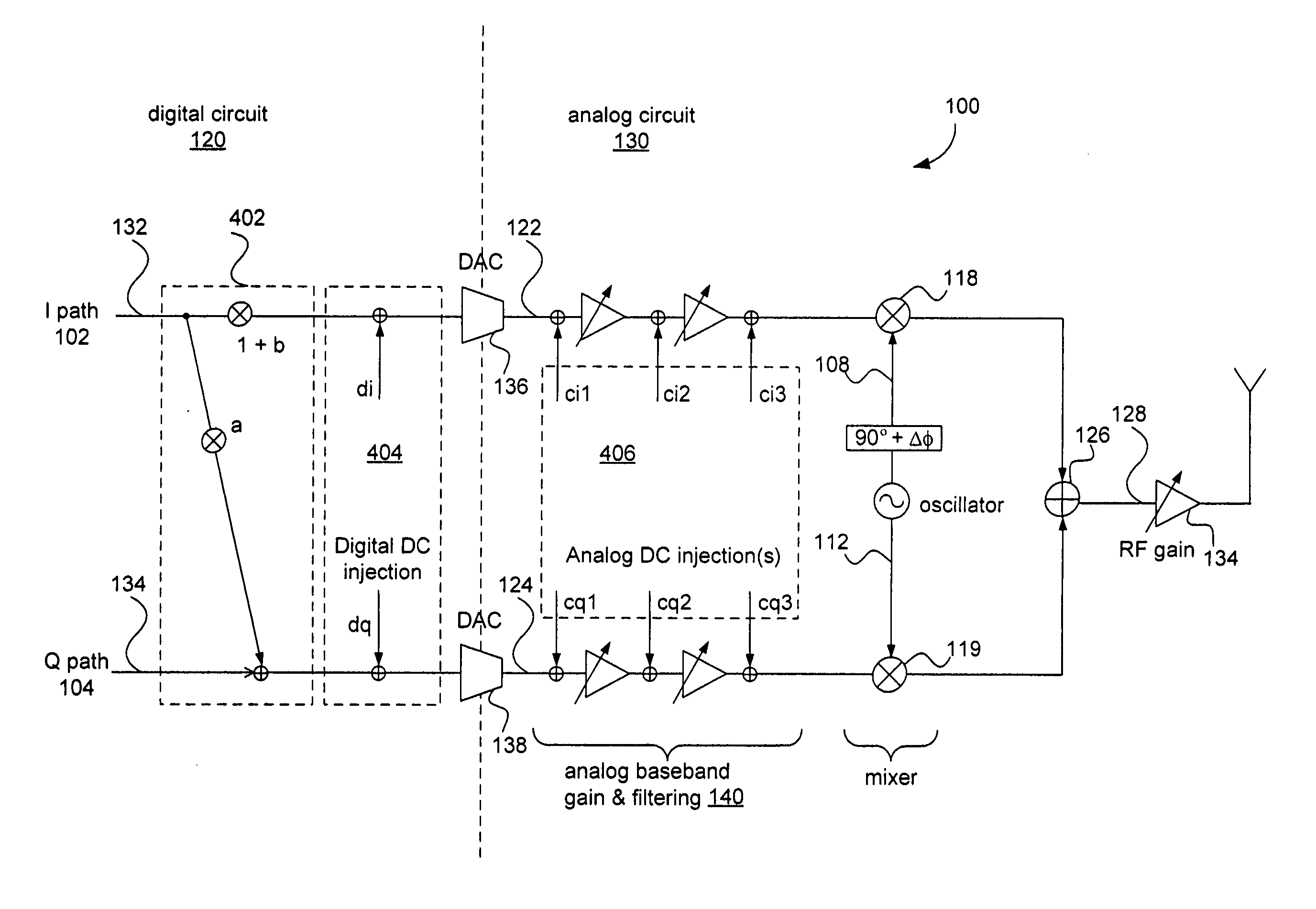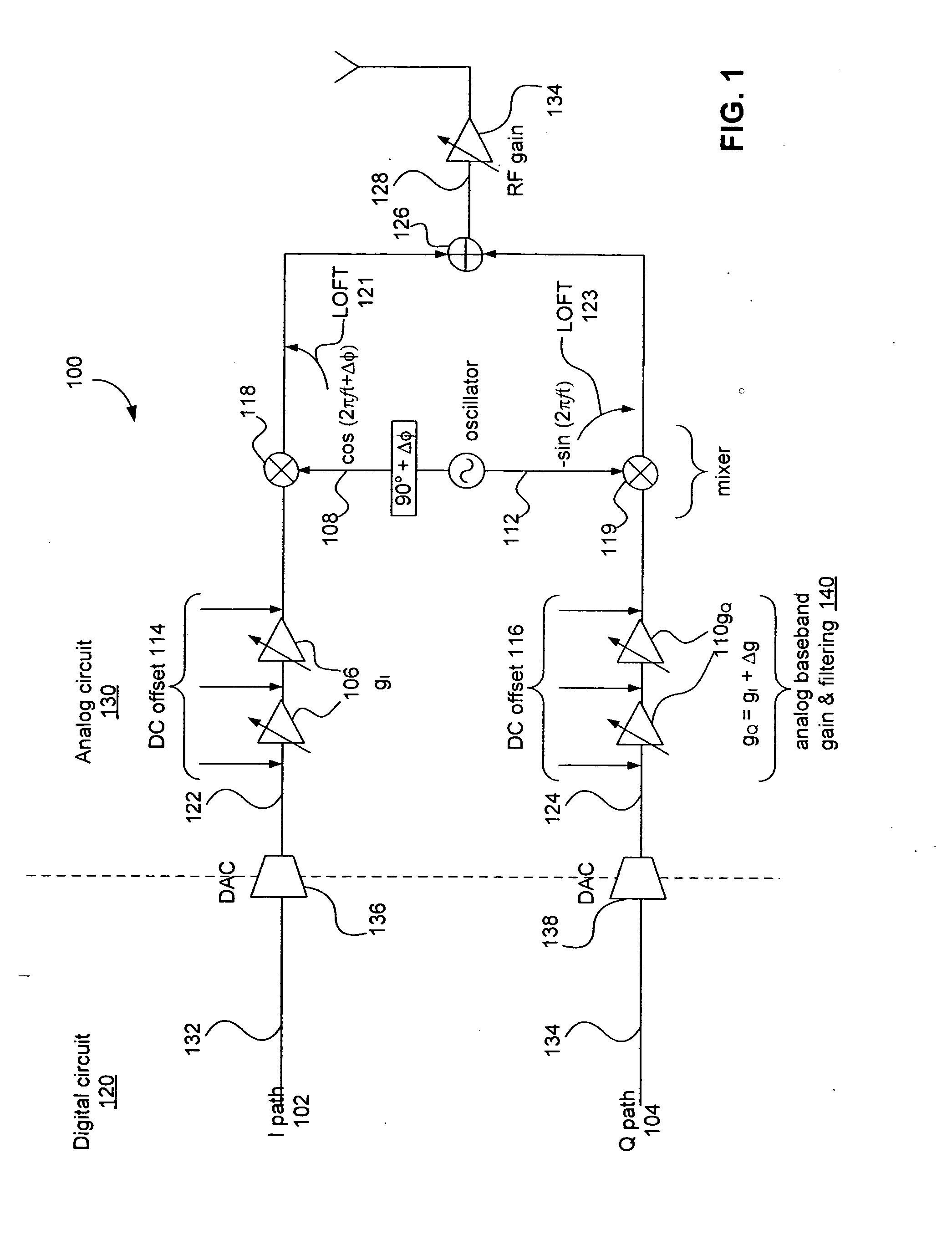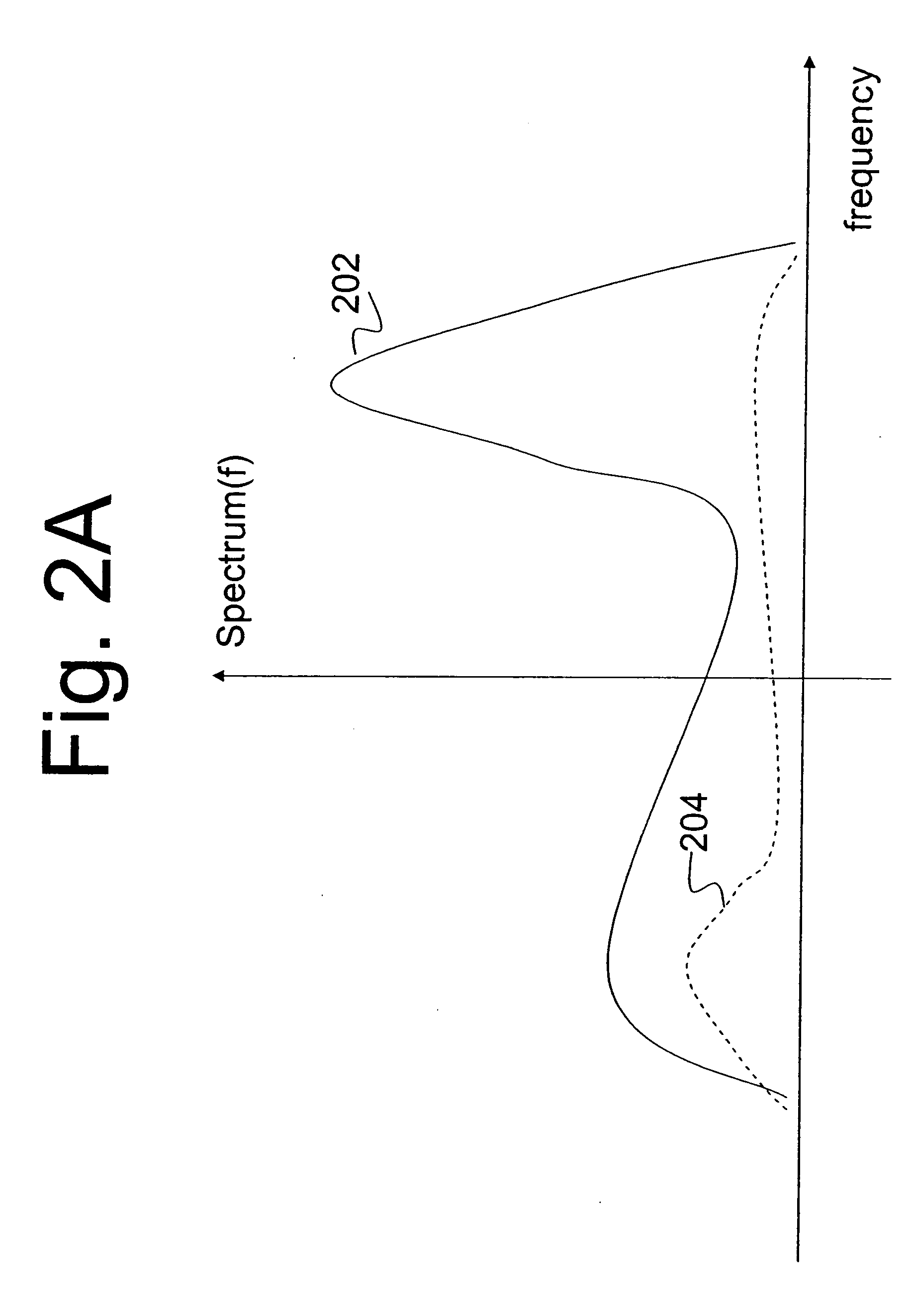Methods and systems for calibrating for gain and phase imbalance and local oscillator feed-through
a local oscillator and gain and phase imbalance technology, applied in the field of transmitter calibration, can solve problems such as unwanted signals, affecting the accuracy of the signal, so as to reduce the gain and phase imbalance and reduce the feed-through of the local oscillator
- Summary
- Abstract
- Description
- Claims
- Application Information
AI Technical Summary
Benefits of technology
Problems solved by technology
Method used
Image
Examples
example embodiments
IV. EXAMPLE EMBODIMENTS
[0101]FIG. 11 is a more detailed block diagram of the transmitter 100 illustrated in FIG. 5. For ease of illustration, separate I and Q paths are not illustrated in FIG. 11. The discussion of FIG. 11 begins with the testtone generator 105.
[0102] The test tone generator 501 generates a pure complex test tone in the digital domain, seq_fT. In the example of FIG. 11, the test tone generator 501 is illustrated as a sample play buffer. As described above, the sample play buffer includes a storage medium that holds samples of a complex sinusoid. The samples encompass an integral number of test tone periods. During calibration, the samples are played repeatedly into the transmitter 100. This is illustrated in FIG. 11 as testtone signal seq_fT. An input multiplexer 1106 is controlled to pass the transmit signal 1102 during normal operation, or the test tone signal seq_fT during calibration.
[0103] In the example of FIG. 11, the test tone generator 501 also outputs a ...
PUM
 Login to View More
Login to View More Abstract
Description
Claims
Application Information
 Login to View More
Login to View More - R&D
- Intellectual Property
- Life Sciences
- Materials
- Tech Scout
- Unparalleled Data Quality
- Higher Quality Content
- 60% Fewer Hallucinations
Browse by: Latest US Patents, China's latest patents, Technical Efficacy Thesaurus, Application Domain, Technology Topic, Popular Technical Reports.
© 2025 PatSnap. All rights reserved.Legal|Privacy policy|Modern Slavery Act Transparency Statement|Sitemap|About US| Contact US: help@patsnap.com



